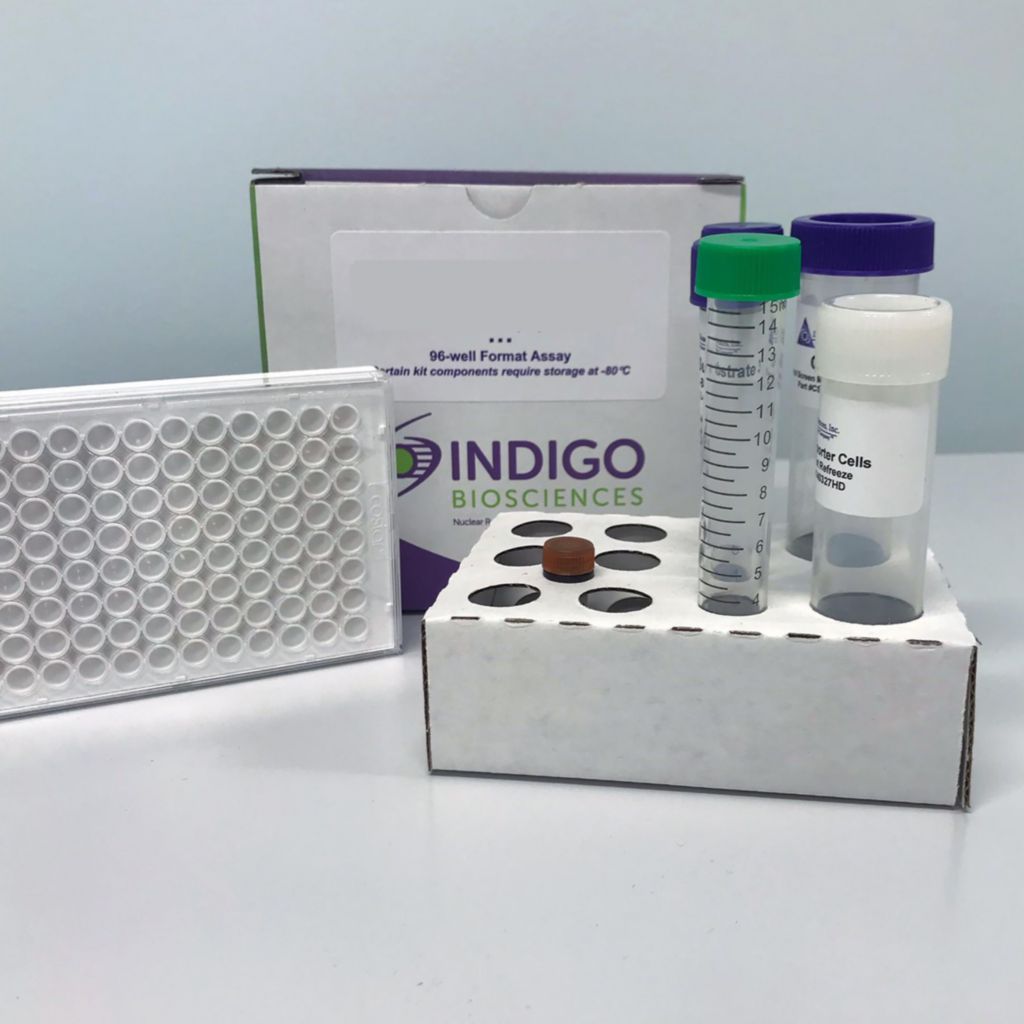Product Description and Product Data
This is an all-inclusive cell-based luciferase reporter assay kit targeting the Human G Protein Coupled Bile Acid Receptor 1 (GPBAR1), also commonly referred to as the Takeda G-protein-coupled receptor 5 (TGR5). INDIGO’s TGR5 reporter assay utilizes proprietary mammalian cells that have been engineered to provide constitutive expression of TGR5. In addition to TGR5 Reporter Cells, this kit provides two optimized media for use during cell culture and in diluting the user’s test samples, a reference activator, Luciferase Detection Reagent, and a cell culture-ready assay plate. The principal application of this assay is in the screening of test samples to quantify any functional activity, either activating or inhibitory, that they may exert against human TGR5. This kit provides researchers with clear, reproducible results, exceptional cell viability post-thaw, and consistent results lot to lot. Kits must be stored at -80C. Do not store in liquid nitrogen. Note: reporter cells cannot be refrozen or maintained in extended culture.
Features
Clear, Reproducible Results
- All-Inclusive Assay Systems
- Exceptional Cell Viability Post-Thaw
- Consistent Results Lot to Lot
Product Specifications
| Target Type | GPCR | ||
| Species | Human | ||
| Receptor Form | Native | ||
| Assay Mode | Agonist, Antagonist | ||
| Kit Components |
| ||
| Shelf Life | 6 months | ||
| Orthologs Available | No | ||
| Shipping Requirements | Dry Ice | ||
| Storage temperature | -80C |
Data
Target Background
TGR5 was characterized in 2002 as the first cell surface receptor for bile acids. It is encoded by the GPBAR1 gene, which is conserved among vertebrates, indicating its physiological importance. TGR5 is expressed in various organs (such as gallbladder, intestine, spleen, brown adipose tissue, and skeletal muscles) and cell types (such as macrophages, liver endothelial, and Kupffer cells). As a member of the G Protein-coupled receptor family, the topology of TGR5 displays the characteristic seven transmembrane helices, three extracellular loops contributing to ligand binding, and an intracellular carboxy tail that associates with trimeric G proteins. Upon binding to bile acid ligands, TGR5 undergoes a conformational change that triggers the activation of Gas proteins via an exchange of GDP with GTP, followed by the activation of adenylate cyclase and the production of cAMP. TGR5 functions as a metabolic regulator involved in the homeostasis of bile acids, glucose metabolism, lipid metabolism and energy expenditure. In addition, TGR5 regulates pathways related to inflammation, cancer, and liver regeneration. Interestingly, The TGR5 promoter harbors the response element for the Farnesoid X Receptor (FXR), the predominant bile acid nuclear receptor, resulting in ligand-dependent cross-signaling between FXR and TGR5.
INDIGO’s TGR5 Reporter Cells include the luciferase reporter gene functionally linked to tandem Cyclic AMP Response Elements (CRE) and a minimal promoter. Activated adenylate cyclase results in the production of cAMP, which binds the transcription factor CREB (cAMP Response Element-Binding Protein). Activated CREB binds to CRE sequences, seeding the formation of a complete transcription complex that drives luciferase gene expression. Thus, quantifying changes in luciferase expression in the treated reporter cells provides a sensitive surrogate measure of the changes in human TGR5 activity.
Therefore, the principal application of this reporter assay is in the screening of test compounds to quantify any functional activity that they may exert against human TGR5.
Also available as a service

